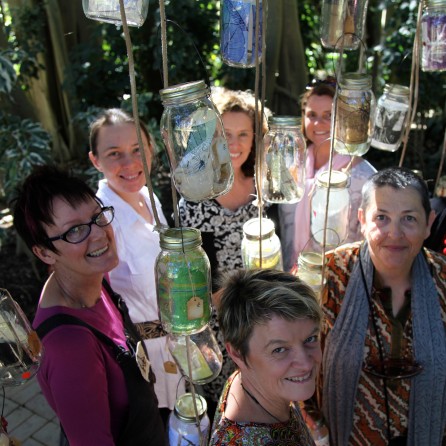 There is growing evidence that arts and culture play an important role in the growth, development and identity of Australia’s regions and regional towns. From disaster recovery to story telling, arts and culture in regional and remote Australia can contribute to the social, educational and economic opportunities of regional towns and can feed into state government’s broader development objectives.
There is growing evidence that arts and culture play an important role in the growth, development and identity of Australia’s regions and regional towns. From disaster recovery to story telling, arts and culture in regional and remote Australia can contribute to the social, educational and economic opportunities of regional towns and can feed into state government’s broader development objectives.
In recent years NSF has evaluated arts-led initiatives rolled out in regional Australia. We are currently in the midst of assessing the Creative Capricorn initiative in Rockhampton, Queensland, and the Small Town Transformations program in regional Victoria. The objectives of these two program differ, they are both still underway and their conclusive outcomes not yet fully known. However, some common themes from these regions––and others––are emerging that shed light on what makes a successful regional arts and cultural initiative.
Success factor 1: They identify and nurture strategic partnerships
Successful regional arts initiatives form and nurture long-term strategic partnerships with individuals and organisations from the local area and broader region. Ideally, partnerships are formed across a range of sectors including tourism, hospitality, government and services. To identify and nurture good strategic partnerships is to make it more likely to broaden the reach of the initiative and to attract further funding and support into the future.
Success factor 2: They receive commitment and support from local government
Local governments in Australia are increasingly responsible for the initiation, development and support of arts and cultural programs in regional areas. For a regional arts or cultural initiative to be successful, they should be endorsed and supported by local government. Arts and cultural planning should be integrated into the economic, tourism, social and land-use planning of council’s development. There should be systems should be in place to enable council to provide practical and administrative support, including marketing and promotions.
Success factor 3: They capture local stories
Regional towns and town clusters are typically fiercely proud of their identity and may have a rich or colourful history. It is important to identify and build upon unique local stories that interpret the cultural heritage of the place. In April, Regional Arts Australia launched a search for great arts stories from regional Australia to be included in a new publication, to be launched in October. This is an important contribution to the building of a body of work documenting the quality, scope and impact of artistic activity occurring in regional and remote areas of Australia.
Success factor 4: They nurture artistic excellence
Lindy Hume, Artistic Director of Opera Queensland, advocates for a more ambitious approach to promoting artistic excellence in regional Australia. More and more Australians regional artists are thinking globally and the narrative around their work needs to reflect that. Although not everyone aspires to be excellent, there should be a space in our narrative and design of regional arts initiatives to reflect high standards. Lindy Hume’s address about artistic excellence can be viewed here.
Success factor 5: They receive adequate funding support
It is not uncommon in Australia for regional arts-led initiatives to be funded for a three-year period, often coinciding with an election cycle. At the end of a pilot period some funding bodies may expect communities to have enough newly acquired professional and personal skills to be able to continue the initiative unaided. In some cases this may be realistic, but other regions may required longer-term support to increase the likelihood of achieving positive outcomes into the future.
Success factor 6. They are inclusive and diverse
Engagement, participation and support from the local community is one of the best measures of success of any regional arts initiative. The scheme should provide opportunities for creative input from a range of artistic forms with the aim of encouraging participation of people with a variety of interests. It should particularly aim to engage marginalised groups, including Indigenous, minor cultural or ethnic groups, youth and the elderly.
Conclusion
Regional Australia provides a unique set of contextual influences that contribute to these common success factors of arts and cultural initiatives. There are often existing strong community networks, vast geographical distances to metropolitan centres and limited funding options. To consider the local context along with key success factors is the best way of ensuring that an arts and cultural initiative has the best chance of delivering what was intended of it in regional Australia.
Photo: Tom Hearn. TRACE program, part of Creative Capricorn initiative, Rockhampton
